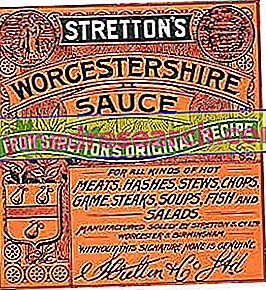
Scientific name
Citrus aurantium L. var. amara, Citrus aurantium L. var. dulcis L.
Family
RutaceaeOrigin
Far East.
Synonyms
Bitter orange
Used Parts
In therapy, the bark of the ripe fruit (bark), the bark of the immature fruit (bark), the flowers and the leaves are used.
Chemical constituents
- Essential oil (essential flower oil called " Neroli ");
- citroflavonoids;
- Sympathomimetic amines such as synephrine (dry extracts of rind of the immature fruit);
- Cumarine and Furocumarine.
Bitter Orange in Herbal Medicine: Properties of the Bitter Orange
The peel of the ripe bitter orange fruit is used in infusion as a flavoring and bitter-tonic, and is also present in numerous herbal teas of the Official Pharmacopoeia.
The essential oil has anti-inflammatory and disinfectant properties; in phytocosmetics, it is used for its decongestant, antiseptic, skin purifying, softening and softening properties.
Orange is used as a source of limonene (detergent, anticancer) and hesperidin (flavonoid capillary-protector).
The peel of the immature fruit is used as a stimulant and anorectic.
Biological activity
Bitter orange has bitter-tonic, digestive, stomachic (increased gastric secretion) and antispasmodic properties on the gastrointestinal tract.
More in detail, these properties are ascribed to the rind of bitter orange fruits and the essential oil contained in it. Furthermore, antimicrobial and sedative activities are also attributed to the aforementioned oil.
The anorectic actions attributed to the plant are attributable to the synephrine contained in the bitter orange. In fact, it is not uncommon for bitter orange to be included in the composition of food supplements used as adjuvant remedies during the slimming process.
Furthermore, sedative, diaphoretic, febrifugal and carminative properties are attributed to bitter orange leaves and are widely used in herbal teas.
Finally, the essence of neroli is obtained from the bitter orange flowers, which is widely exploited by the perfume industry.
Bitter orange against appetite and dyspeptic disorders
Thanks to the marked stomachic, eupeptic and antispasmodic properties of bitter orange, its use has been officially approved for the treatment of dyspeptic disorders and the associated symptoms (such as flatulence, feeling of fullness, etc.).
Moreover, thanks to the bitter-tonic activities that it is able to exercise, bitter orange is also effective in counteracting the loss of appetite.
Generally, for the treatment of the aforementioned disorders, we recommend taking 1-2 grams of bitter orange extract per day.
If the bitter orange is used in the form of a mother tincture obtained from the peel of the fruits (ratio drug / solvent 1: 5), then it is recommended to take about 2-3 grams of product per day.
Alternatively, bitter orange can also be taken as an infusion. For more information on this, see the article on "Bitter orange (fruit rind) in herbal teas".
Bitter orange in folk medicine and homeopathy
The digestive properties of bitter orange have long been known to folk medicine, which uses the rind of its fruits to stimulate the appetite and to counteract digestive disorders.
Furthermore, folk medicine uses bitter orange flowers and the essence extracted from them for the treatment of chronic bronchitis, sore throat, gastric disorders and gout; besides using them as a sedative remedy in case of insomnia and nervous tension.
Traditional Chinese medicine, on the other hand, uses bitter orange flowers in the treatment of epigastric pain, vomiting and anorexia; while it uses the zest of its fruits as a remedy to counter colds, coughs and even rectal prolapse and uterine prolapse.
Bitter orange is also used in homeopathy, where it can be found in the form of granules and mother tincture.
Generally, homeopathic medicine exploits this plant in case of digestive problems, headaches, epigastric pain, constipation and dysentery; in addition to using it as a remedy to promote weight loss and to counteract excessively high blood pressure.
The amount of homeopathic remedy to be taken can vary from patient to patient, also depending on the type of disorder that needs to be treated and according to the type of preparation and homeopathic dilution that is intended to be used.
Pharmacological Interactions
- citroflavonoids can interfere with the absorption of some drugs;
- extracts of the ripe fruit can increase the gastrolesivity of NSAIDs and other bitters;
- interactions of the extract obtained from the rind of the immature fruit with ephedrine, caffeine, thyroxine, sympathomimetics and yohimbine are reported.
Bitter Orange - Warnings
Prudence in the intake of bitter orange extracts containing synephrine (maximum daily dose allowed 30 mg) by subjects at cardiovascular risk (obese, diabetic, cardiopathic and hypertensive, hyperthyroid), but also by people with neurodistonic disorders and psychiatric patients, in addition to evidently for children and pregnant women.



